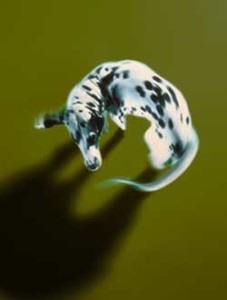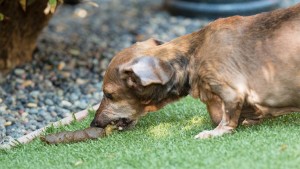
Call us Now ![]() +91-8744012053
+91-8744012053
Mon - Sat ~ 10:00 AM - 6:00 PM
Follow & Like
.png)


Call us Now ![]() +91-8744012053
+91-8744012053
Mon - Sat ~ 10:00 AM - 6:00 PM
Follow & Like
.png)


Common Dog Behavior like digging, scooting or sitting between your legs give an insight into the body language/common behaviors of your pet dog. Decoding it will not only help you understand its mood but also better your relationship with the furry family member. In fact some of its actions may reflect health issues that require your attention and assistance.

Digging of the earth also takes place to create a cool spot that offers some respite from the searing sun.
Biting: Three kinds of emotions namely, fear, aggression and anxiety are behind a dog’s bite. In order to prevent a bite from occurring you must closely come to understand canine body language. There are warning signals given out by the dog that precede a full attack/bite. Aggression emits out in the form of dog showing off its teeth, or making a direct eye contact with the one that it may attack, and growling with raised hackles. Other signs to look out for include pinned up ears or upright tail of the pet. However young pooches/puppies nip to communicate with their human parents, the mouth is used for the purpose of interaction. Playfulness also causes the nipping behavior in pups.

Head Pressing: Do not take this lightly! Your dog needs to be checked by a vet without further delay, if it is seen pressing its head against a sturdy object or a wall. Consider it to be a warning sign as your pet could be suffering from brain disease or toxic poisoning.
Yawning: It is often associated with a desire to sleep or a state of tiredness. Even in case of humans a yawn is an urge to nap. But away from these typical interpretations lies an interesting finding pertaining to dog yawns. A yawn can show that the dog is stressed or experiencing fear. Excessive yawning may occur around a new guest/external stimulus and the pet is simply expressing its discomfort. It is best to give some time and space to the dog, rather than forcing it to face the new person.

Circling is also one of the signs associated with the idiopathic vestibular disease in older dogs. mage: www.lhah.com
Circling: A dog’s obsession with chasing its tail could be the sign of an underlying health issue such as an ear infection. However a once in a while circling should not raise your concern! Circling is also one of the signs associated with the idiopathic vestibular disease in older dogs. Only a vet will be able to affirm the actual cause for an obsessive behavior of this kind by carrying out a thorough check up of the pooch.
Barking: It is used to alert pack members of some possible danger or perhaps when there is a stranger at the entrance of your house. Other triggers include boredom; the dog is not being exposed to enough exercise and games to stimulate its mind. Also separation anxiety could lead to continual dog barking. Bouts of barking are adopted by spoilt dogs when their demands aren’t met by their human parents. Sometimes a dog barks incessantly to shoo away strangers, this kind of fear of strangers is seen in the rescued lot.

Puppies that eat poop are the ones trying to ape their mother’s instinctual behavior that involves cleaning its young ones and often swallowing their fecal discharge in the process.
Eating poop: Surprisingly the smell of poop may instill curiosity in the pooch beckoning it to taste the feces. Another factor could be nutritional deficiency. Puppies that eat poop are the ones trying to ape their mother’s instinctual behavior that involves cleaning its young ones and often swallowing their fecal discharge in the process. Fear of punishment could lead to the dog gobbling up its poop especially if it has done its business in an inappropriate place.
Digging: To dig is a dog’s natural tendency. In a natural setting the pack will dig to bury food or at other times to unearth something it can gorge on like mice and rats. Digging of the earth also takes place to create a cool spot that offers some respite from the searing sun. You must have noticed your pet scratching the flooring or the sofa to create/find that comfy spot before it can retire.

Dogs pant to expel body heat and regulate the body temperature. Canines sweat through their paw pads and release heat through the mouth.
Scooting: It is the act of a dog dragging its behind on the floor. It is an indication that something is bothering the dog’s anus. It could be due to itchiness caused by allergies. In some cases it is due to anal gland issues. Anal glands produce a fluid used in scent marking. In natural course a small quantity of this fluid is released during defecation. Sometimes the path of fluid is obstructed and the sacs holding them become full/bloat up, uncomfortable and infected and need to be expressed. Also a dog that feasts on grass or enjoys licking around things may end up with grass/hair being trapped in its anus. It is seen rubbing its buttocks on the floor to get the strands out.
Sitting between your legs: This may be confused with a need to dominate or exert possessive behavior. The real situation however could greatly differ from the above notion. In most cases the canine is anxious/tense or scared and looks out for a sense of security by staying really close to its owner.
 Image – Dog obedience Training
Image – Dog obedience Training
Panting: Dogs pant to expel body heat and regulate the body temperature. Canines sweat through their paw pads and release heat through the mouth. Panting is also adopted to deal with pain due to injury.
Head Pressing: Do not take this lightly! Your dog needs to be checked by a vet without further delay, if it is seen pressing its head against a sturdy object or a wall. Consider it to be a warning sign as your pet could be suffering from brain disease or toxic poisoning.
Jumping: Your furry friend will jump up to greet you. Since humans are taller the dog simply jumps up to reach our faces and gain our attention. The jumping behavior could take a negative turn in the form of dominance being exerted by the dog. You can train the dog not to jump on you to greet by showing through your actions that it must have its front paws on the floor to get your attention and pet. Do not look at the dog or reciprocate to the dog’s greeting unless it has its fore legs fixed on the ground. The moment you notice that its front feet have landed on the floor shower the dog with your attention and affectionate petting.
Article Resource:
https://www.cesarsway.com/dog-behavior/innocuous-behaviors/common-dog-behaviors-explainedhttp://www.hillspet.com/en/us/dog-care/behavior-appearance/types-of-common-dog-behavior